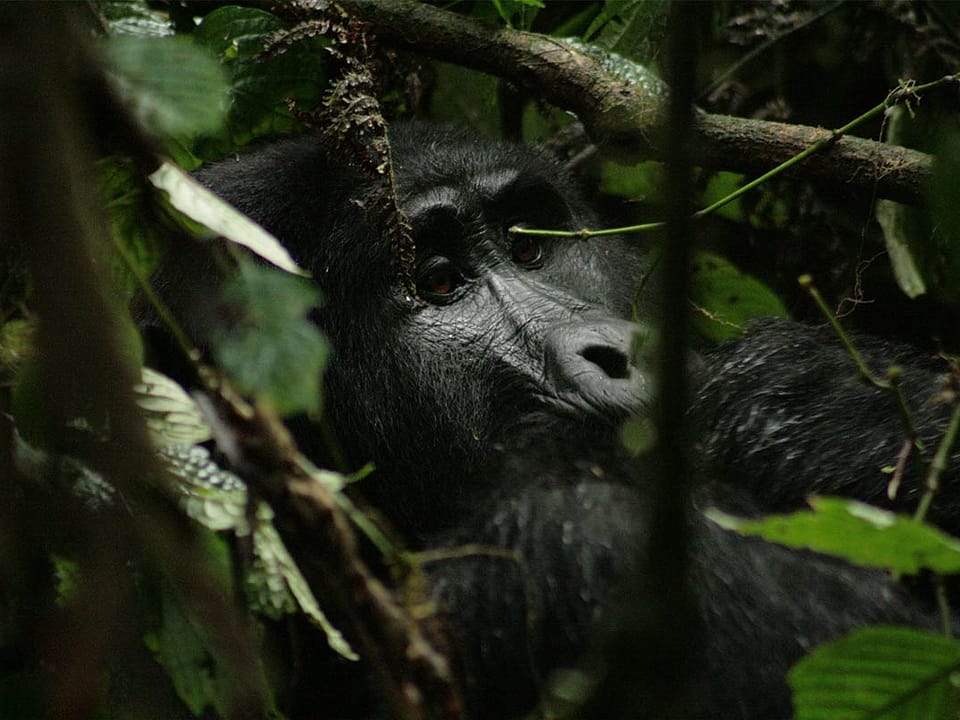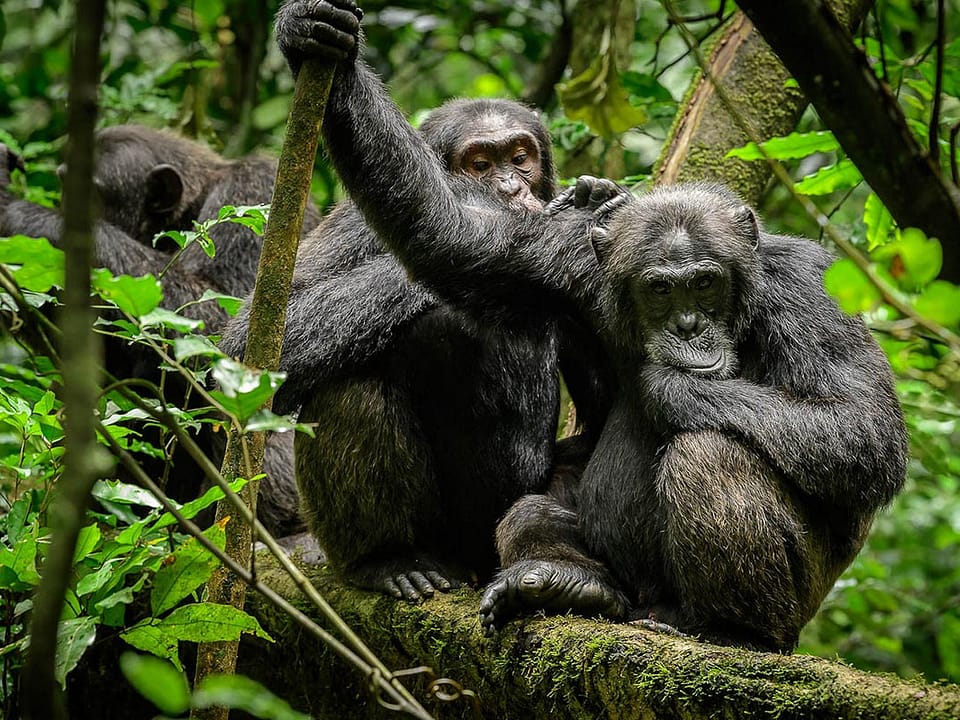Basic Gorilla Facts


Need-to-know Basic Gorilla Facts
Gorillas have known to display many human-like behaviors and emotions, such as laughter and sadness. They even make their own tools to help them survive in the forest. In fact, gorillas share 98.3% of their genetic code with humans, making them our closest cousins after chimpanzees and bonobos. The largest of the great apes, gorillas are stocky animals with broad chests and shoulders, large, human-like hands and small eyes set into hairless faces.
The World’s Great Apes including Gorillas, Orangutans and Chimpanzees belong to the order ‘Primates’ which also includes human beings. Gorillas are the largest members of the primate family and are closely related to humans, with 98% of their DNA identical to that of humans. Unlike other primates they are terrestrial, meaning they do not climb trees and are land dwelling, inhabiting the tropical rainforests of central Africa. Historically the gorilla has been portrayed as a vicious killer; however they are shy gentle creatures that would not attack humans unless provoked.
Gorillas are classified as mammals, which is defined by the Oxford English dictionary as a ‘A warm-blooded vertebrate animal of a class that is distinguished by the possession of hair or fur, females that secrete milk for the nourishment of the young, and (typically) the birth of live young’.
Gorillas are classified as into two species and four sub species according to geographical location and physical characteristics. They live in groups called a troop lead by a dominant silverback male, and are highly sociable animals, maintaining strong bonds between group members.
In the wild their only predators are leopards, which can attack vulnerable youngsters and the biggest threat to gorillas is man. In recent decades gorilla populations have been affected by habitat loss, disease and poaching. Subsequently all gorilla species are classified as endangered by the International Union for Conservation of Nature (IUCN). Due to the vast dense areas in which they live it is difficult to monitor and protect gorilla populations and therefore difficult to implement successful conservation techniques. However conservation efforts persist and several governmental and non governmental organizations working together to further improve gorilla conservation.
Gorilla Species
There are two recognized gorilla species the Eastern Gorilla and Western Gorilla, defined by the areas in Africa which they inhabit according to Endangered Species International Organisation. Within these classifications are four subspecies including the Eastern Lowland Gorilla, Mountain Gorilla, Cross River Gorilla and Western Lowland Gorilla. All subspecies live in varying habitats, have unique physical characteristics and have differing populations.
The eastern gorilla (Gorilla beringei)
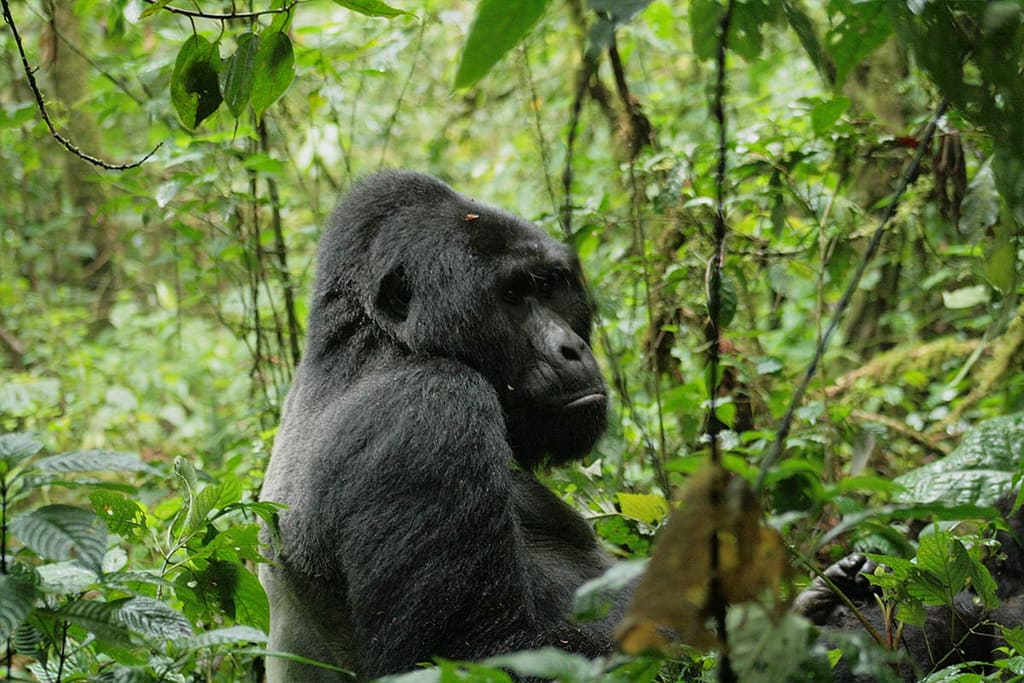
The eastern gorilla is one of two gorilla sub-groups found roaming in the jungles on the African continent, i.e. The Eastern Lowland Gorilla and The Mountain Gorilla. The eastern gorilla is also the largest primate in the world.
The eastern gorilla is found inhabiting the tropical jungles and forests of parts of eastern and central Africa, along with lowland swamps and secondary forests found in the countries of Rwanda, Uganda and eastern Congo.
There are considered to be two separate sub-species of eastern gorilla which are the eastern lowland gorilla and the mountain gorilla. Although only slightly different in appearance, the two eastern gorilla species differ in their numbers with the mountain gorilla being rarer in the wild today than the eastern lowland gorilla.
The eastern gorilla is one of the great apes, a group that includes orang-utans, gorillas, humans and chimpanzees. As with the other great apes, the eastern gorilla has a number of features which makes living in the jungle a bit easier, including having opposable thumbs which come in handy when the eastern gorilla is peeling fruit.
The eastern gorilla is an omnivorous animal, but the majority of its diet is made up of eating fruit which the eastern gorilla is known to travel vast distances through the forests to find. The eastern gorilla also eats leaves, nuts and berries, along with insects and occasionally small animals such as lizards and rodents. The eastern gorilla has also been observed using basic tools in the wild in order to more effectively gather food.
Due to its large size, the eastern gorilla has few real predators in its native African forests, with large cats such as leopards and the odd crocodile being the only real natural threat to the eastern gorilla. The biggest threat to the eastern gorilla is habitat loss caused by deforestation and also being hunted by humans. Parts of the eastern gorilla’s territory has also been taken over by civil unrest in recent years, which, along with poaching, has had a truly devastating affect on wild populations.
The eastern gorilla tends to live in groups which are led and protected by the alpha male. The alpha male eastern gorilla also mates with the females in his group, producing generally single offspring, known as babies. The eastern gorilla babies remain with their mother until they are a few years old and become independent.
Today, all eastern gorillas are considered to be critically endangered species with populations having suffered due to habitat loss and illegal poaching. There are estimated to be around 5,000 eastern lowland gorillas, and an even slightly above 1000 mountain gorilla individuals left in the wild.
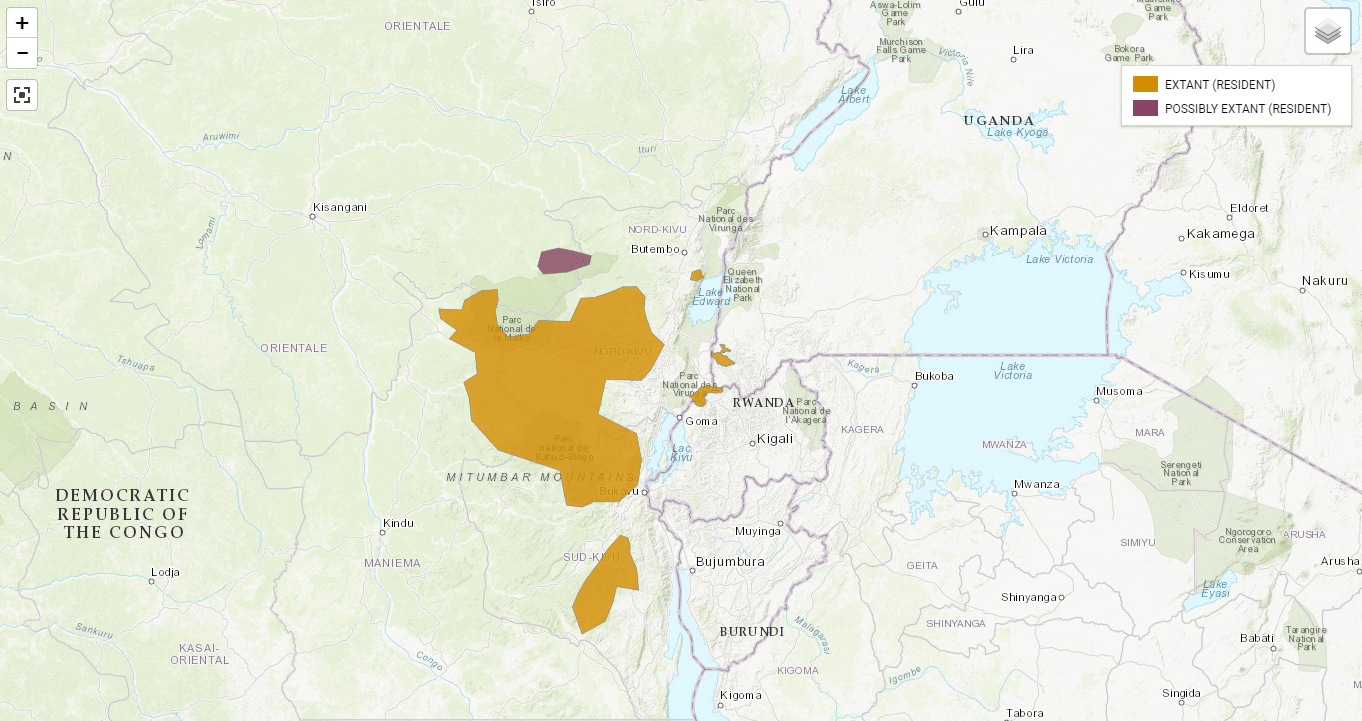
Found in the Virunga Mountain Forest of Northern Rwanda in Volcanoes National Forest, Eastern DR Congo in Virunga National Park, South Western Uganda in Mgahinga National Park and Bwindi Impenetrable Forest, the mountain gorillas are East Africa’s biggest attraction drawing in travellers from all over the world to come witness these magnificent creatures. This has brought together efforts by government and non-profit organisation is protecting the endangered mountain gorillas and helping the numbers grow steadily over a few years. You can help in this effort by buying a gorilla trekking permit to go see these animals with the help of Naturetrack Expedition’s travel experts.
Summery of Eastern Gorilla Sub Species
Species: Eastern Lowland Gorilla
Scientific name:Gorilla beringei graueri
Location: Democratic Republic of Congo
Population: Less than 3000
Conservation status: Endangered
Physical characteristics: Largest of gorilla sub species, longer arms than the mountain gorilla and shorter hair and teeth.
Species: Mountain Gorilla
Scientific name: Gorilla beringei beringei
Population: Less than 110,000
Location: Volcanoes National Park (Rwanda), Virunga National Park (Congo), Mgahinga National Park (Uganda), Bwindi Impenetrable Forest (Uganda)
Conservation Status: Critically Endangered
Physical characteristics: Large skull, wide face and angular nostrils. Larger body and longer hair than eastern lowland gorilla.
Gorilla safaris for your interest
Gorilla Safari Uganda Luxury Holiday
Uganda Gorillas & Wild Adventure Safari
Classic Africa Safari in Uganda
Highlights of East Africa Safari
Ultimate Uganda Safari Holiday
Uganda Bird Watching Tour & 18 Days
The Western Gorilla
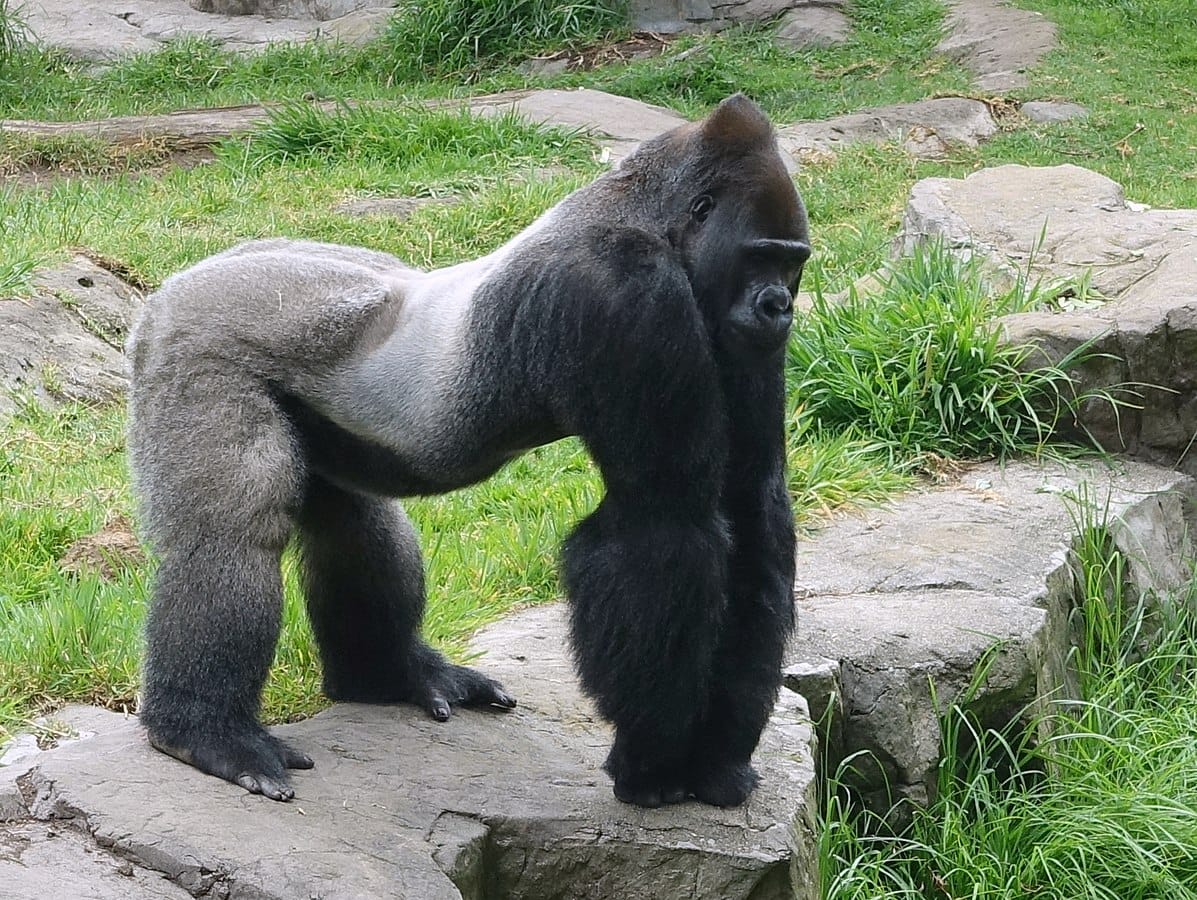
The western gorilla (Gorilla gorilla) is a great ape—the type species as well as the most populous species of the genus Gorilla.
Nearly all of the individuals of this taxon belong to the western lowland gorilla subspecies (G. g. gorilla), whose population is approximately 95,000 individuals. Only 250 to 300 of the only other western gorilla subspecies, the Cross River gorilla (G. g. diehli), are thought to remain.
Description
The Western gorilla is a heavily built primate and is one of the largest of the living apes, second only to the Eastern gorilla. Western gorillas are generally lighter colored than eastern gorillas. Western lowland gorillas have black, dark grey or dark brown-grey fur with a brownish forehead. Measurements of wild individuals show that mature males average 155 cm (61 in) in height, while mature females average 135 cm (53 in). Weights of wild individuals have been rarely taken but captive western gorillas average 157 kg (346 lb) in males and 80 kg (176 lb) in females. The average weight of wild male western lowland gorillas is 146 kg. The Cross River gorilla differs from the western lowland gorilla in both skull and tooth dimensions.
Western gorillas live in lowland, swamp, and montane forests from sea level to 1,600m, have the largest home ranges, up to 20km², and travel the farthest of all gorilla subspecies because of their reliance on fruit. They have been seen to use food tools in the wild, and in captivity they show the capacity to learn basic human language.
Western gorilla habitat

Western gorillas are found primarily in lowland tropical forest, both primary and secondary, particularly where there is dense ground-level herbaceous growth, and in swamp forests. Staple foods are pith, leaves and shoots. The fruit component of the diet is generally high but varies with seasonal availability. Insects also form an occasional component, when they can be caught. Like other subspecies of gorilla, the Western lowland gorilla spends most of its time on the ground but will climb trees to feed on ripe fruits and make a sleeping nest. Gorillas live in groups averaging 10 and occasionally 20 individuals, composed of at least one adult male, several adult females and their offspring.
Despite being the more numerous and widespread gorilla species, the severe threats of hunting, infectious disease and habitat loss Western gorillas are at a greater risk of population collapse in 30 years.
Western gorillas are found in Cameroon, Central African Republic (CAR), mainland Equatorial Guinea (Rio Muni), Gabon, Nigeria, Republic of Congo (RoC), Cabinda (Angola), and possibly in the Democratic Republic of Congo (DRC).
Gorilla Physical Characteristics
Gorillas have very long arms that are even longer than their legs. Gorillas are large animals, very strong and contrary to belief, they are not aggressive animals but peace-loving, shy vegetarians.
Gorillas are covered with brownish/black hair except for their fingers, palms, bottoms of feet and face.
Gorillas have a very large head with a bulging forehead. They have a crest on top which is called the ‘sagittal crest’, and is larger on male gorillas than on female gorillas. Gorillas have tiny ears and small, dark-brown eyes. Gorillas have no tail. Adult gorillas have 32 teeth, with large molars (flat teeth used for chewing food) and large canines (pointy teeth used for biting), which are especially large in the male gorillas. Gorillas each have a unique nose print in the same way humans have unique fingerprints.
Although gorillas are very much like humans, they do not use only their legs to walk on. Instead they walk in what is known as the ‘knuckle-walk’. By doing this, gorillas walk with both their long arms and legs.
According to animal corner, Gorillas roll their fingers into their hands like a sort of fist and apply pressure on the knuckles as they move along. Gorillas are very good at climbing trees with their long, flexible limbs, however, gorillas cannot swim.
The Size of a Gorilla
Male Gorillas are much larger and heavier than female gorillas. Male Gorillas practically weigh about twice as much as a female gorilla.
Gorillas Height Weight Female 4.6 feet (1.4 metres) 200 lb (90 kilograms) Male 5.6 feet (1.7 metres) 400 lb (180 kilograms)

Diet; What Do Gorillas Eat?
Gorillas are predominantly herbivores, however, they are also classed as omnivores. As well as eating mostly plant material, they sometimes supplement their diets with ants and termites. Gorillas forage for food in the forests during the day. Gorillas eat leaves, fruit, seeds, tree bark, plant bulbs, tender plant shoots and flowers. They have been known to eat various parts of over 200 different plant species. Gorillas do not need to drink water as they get the moisture they need from the foliage that they eat. An average adult gorilla eats around 50 pounds of food a day. The gorillas large molars and long canines allow them to crush hard plants like bamboo. Lowland gorillas feed mainly on fruit while Mountain gorillas feed mostly on herbs, stems and roots.
How Gorillas Communicate
Gorillas are generally quiet animals, however, they communicate with each other using many complicated sounds and gestures. Gorillas use at least 25 recognized vocalizations, including grunts, roars, growls, whines, chuckles, hooting, etc. Some gorilla gestures include chest-beating, high-pitched barks, lunging, throwing objects, staring, lip-tucking, sticking out the tongue, sideways running, slapping, rising to a two-legged stance and probably many more.
Lifespan: How Long Do Gorillas Live
Like most animals in captivity, gorillas live a much longer life. Gorillas can reach a mature age of 50 years in captivity as opposed to only 35 years in the wild. This is mostly because they have to fend for themselves in the wild against the elements and human destruction whereas in captivity they are well looked after, cared for and fed and fussed on a regular basis.
Threats to Gorilla Existance
Like humans, gorillas reproduce slowly, giving birth to only one baby at a time and then raising that infant for several years before giving birth again. This slow reproduction rate makes gorillas especially vulnerable to any population declines.
Habitat destruction is a problem across their central African range. Gorillas are also still killed for the bushmeat trade. That trade has helped spread the Ebola virus, which is deadly to both gorillas and humans. Efforts to protect gorillas are often hampered by weak law enforcement and civil unrest in many places where gorillas live.
Habitat loss: Only 17% of the gorilla population currently lives in protected regions, and vast areas of gorilla forest have already been lost. That destruction continues as logging companies clear areas for the timber trade, the mining and oil and gas industries move into gorilla territory, and local people cut down trees to make room for agricultural fields and livestock.
Hunting & Trade: In some cultures in central Africa, the killing and eating of gorillas has increased in recent years and the animals are frequently slaughtered for the bushmeat trade.
Disease: Ebola hemorrhagic fever is a severe, infectious, often fatal disease that has devastated many African great ape populations. Scientists in 2003 estimated that a third of the wild gorilla population had been killed by the Ebola virus, and the species remain at risk. Additionally, because gorillas share so many traits with humans, they are susceptible to other human diseases. Populations of gorillas that are in frequent contact with humans are particularly vulnerable to deadly respiratory infections. In mountain gorilla range, where gorillas frequently raid farms, they are susceptible to scabies, TB and a host of other diseases from human transmission.
Weak law enforcement: Both the killing of gorillas and trade in gorilla products are illegal across the animals’ range, but poachers, traders and consumers are rarely apprehended.
Summery
In Short, Western gorillas and the Eastern gorillas are more genetically distant from one another than are chimpanzees (Pan troglodytes) and bonobos (Pan paniscus). The family Hominidae comprises seven living species in four genera: Homo (humans), Gorilla (gorillas), Pan (chimpanzees) and Pongo (orangutans). Apes are thought to have diverged from Old World monkeys around 20 million years ago. For most of the twentieth century it was thought that there was a single species of gorilla with three subspecies; the western lowland, the eastern lowland and mountain gorillas. However, with DNA analysis it became clear that the significant differences were between eastern and western population rather than lowland and mountain gorillas. These forms were so distinct that they were reclassified as separate species. Today, the western gorilla (Gorilla gorilla) consists of two recognized subspecies: Gorilla gorilla gorilla (western lowland gorillas) and Gorilla gorilla diehli (Cross River gorillas). The taxonomic status of the gorilla populations in the Maiombe Forest (Cabinda, Democratic Republic of Congo and Republic of Congo) and in Ebo/Ndokbou (Cameroon) awaits clarification.

